ESA astronaut Rosemary Coogan stands at the edge, realising how all their geology training has been building up to this moment.
The participants of the seventh PANGAEA campaign arrived in Lanzarote, Spain, following expeditions in Italy and Germany. Rosemary Coogan, Arnaud Prost and Norishige Kanai used orbital images and geological maps to choose their path across the barren terrain and decide on which scientific questions to address.
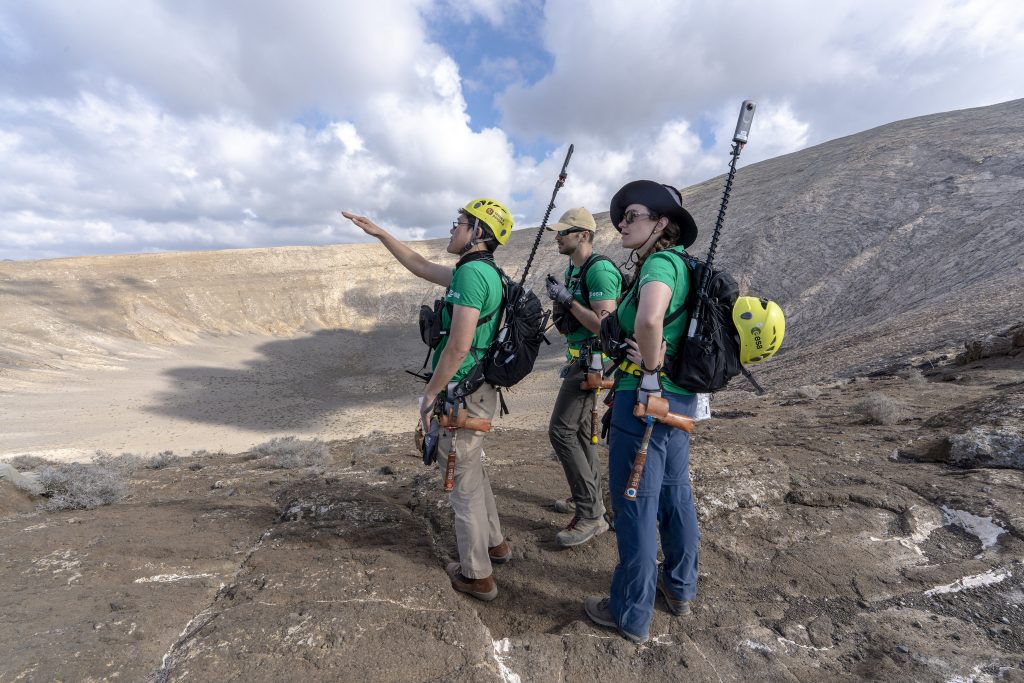
“It is fascinating to realise how we have come so far. Going from almost zero geological knowledge to traversing these complex landscapes and answering scientific questions is quite challenging. At the same time, it is incredibly exciting, and that’s why we are doing this training,” says Rosemary.
As part of her basic astronaut training at ESA, she received an introduction to the different types of rocks found on Earth and the processes that formed them. PANGAEA is the next level up for her.
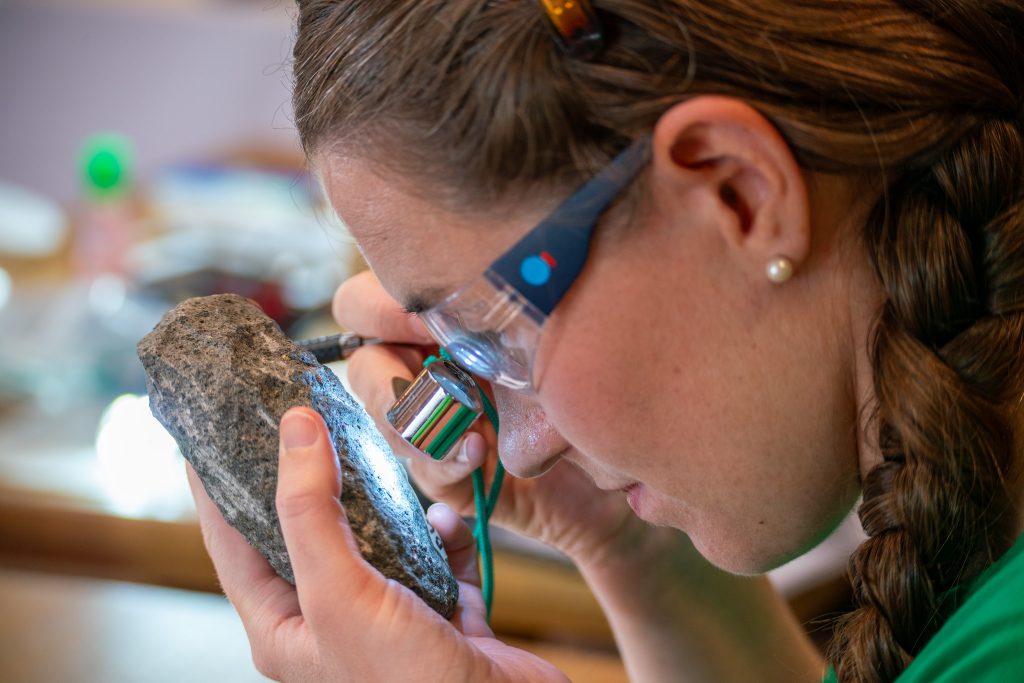
“Once you have done this training, you will never experience being out in nature the same way again. Whether you are hiking, walking along cliffs, or stumbling upon a rock, questions start racing through your mind,” Rosemary says.
Her role during the expedition at the Montaña del Señalo crater was to document every step and sample of the mission without visual contact with the science team. “One of my primary jobs was to give clear descriptions to the scientists of what we could see. I needed to highlight the most important features, and together with the team take decisions about what to collect for a more in-depth analysis,” she explains.
Preparing for the Moon
Rosemary also learned that satellite images alone are not enough to tell the whole story of the Moon.
“Humans must go back to the Moon because we need to collect samples and analyse them with the best equipment. This training is teaching us how to take the right samples, make the right descriptions, and take the right photos, so the scientists have everything they need,” says Rosemary.
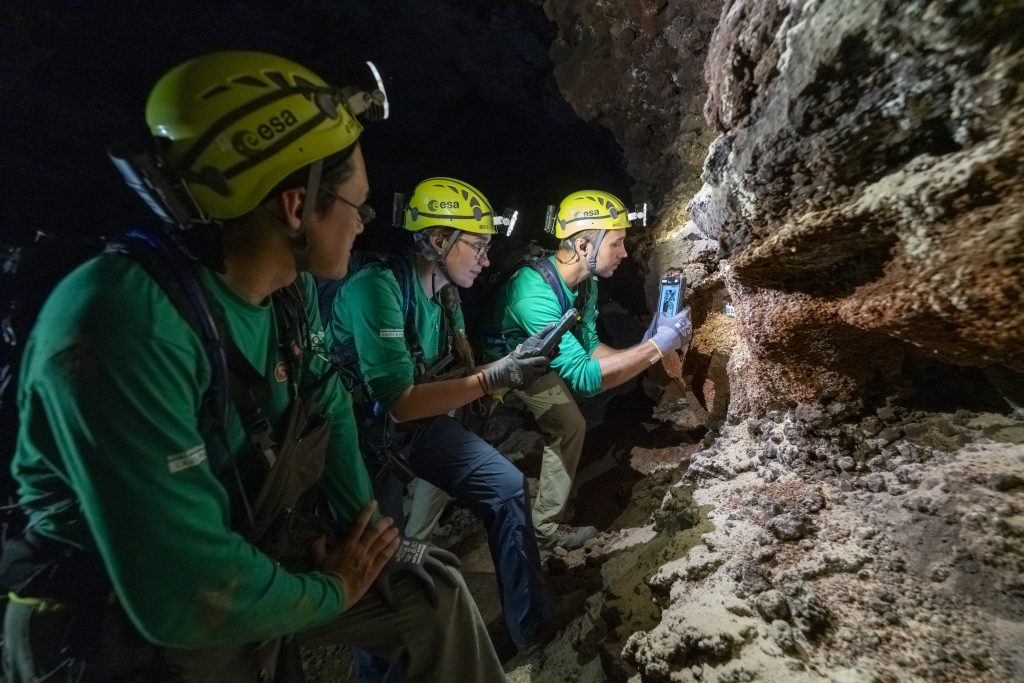
There are back-and-forth conversations with the scientists, the roles of the trainees rotate, and the clock is ticking during every expedition. All the activities are applicable to the operational setup of spacewalks on the Moon.
“It is a real team effort. Scientists help us to plan the routes to explores, and we get to take turns doing everything, from documenting to leading the expedition. We communicate with each other about who should be doing what, when, and why, remaining flexible when things change,” she explains.
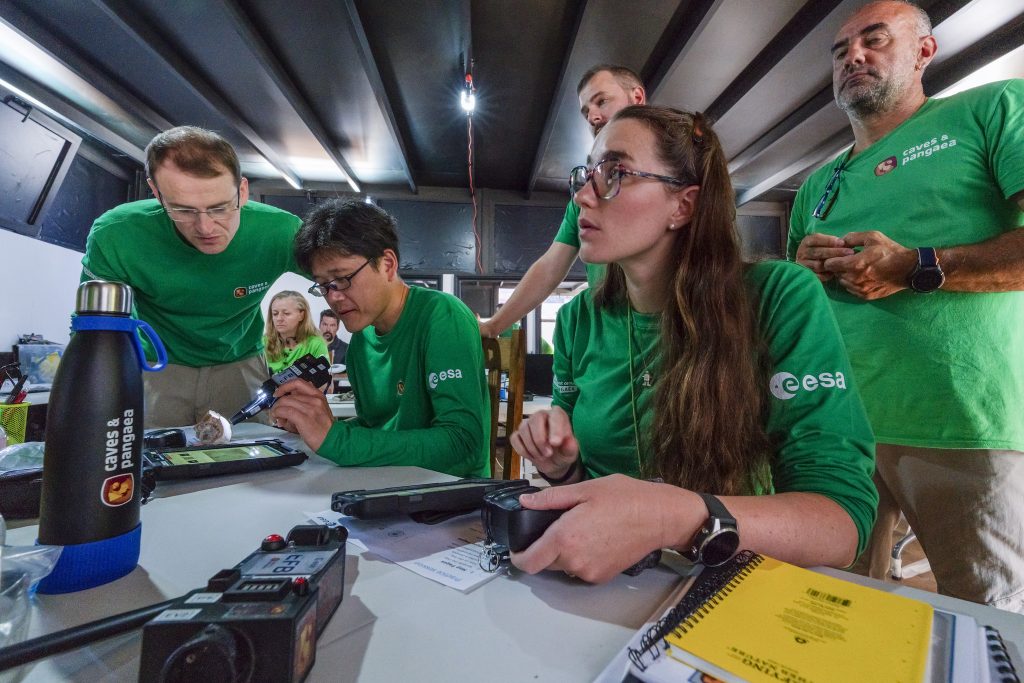
The language of the rocks
The learning curve to use the right words to describe the morphology and composition of the rocks has been sharp. “We have to act as the eyes of the specialists on the ground, but without overinterpreting to avoid wrong assumptions,” she adds.
“What makes this training really enjoyable is putting together all the little clues we have spotted and building the big picture. Three weeks ago, I could have never even begun to think about all the things we know now,” she admits.
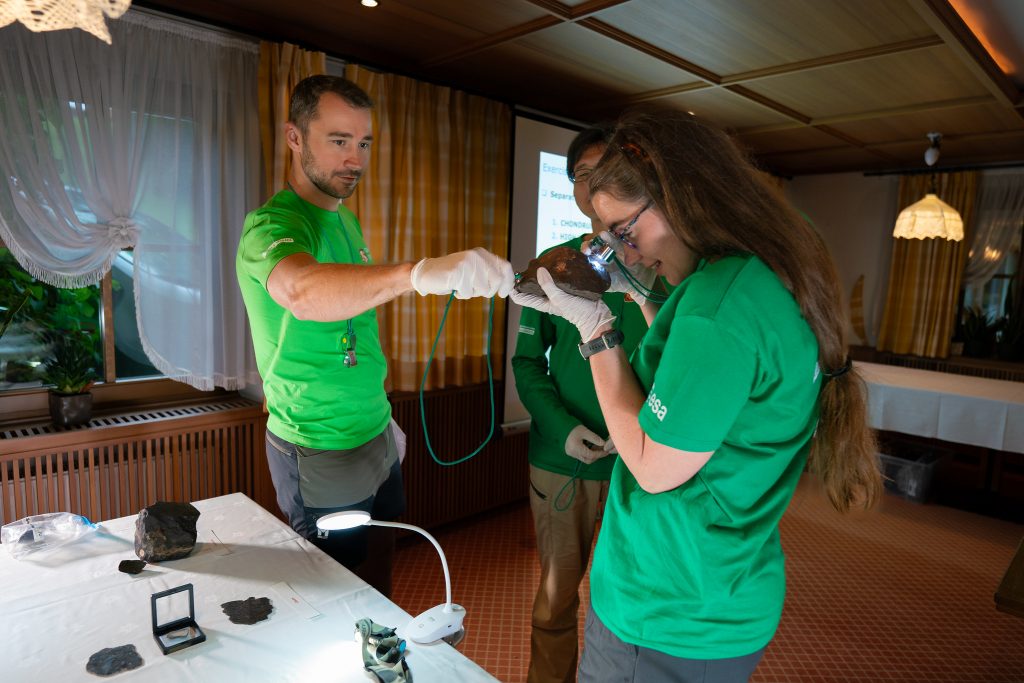
Rosemary holds the rocks with care and tact. She likes to feel their surfaces and pauses to have a closer look with a magnifying glass. During PANGAEA, she is constantly reminded of the high level of attention to detail needed to unveil the history of the terrain.
The second week of the training at the Ries crater in Germany was a revelation for her. “There is an entire town sitting in this 25 km-wide crater created by an asteroid impact 15 million years ago. It was impressive to see the remnants of the collision on such a big scale. Although Earth has experienced many impacts over its lifetime, a lot of evidence has gone, as the tectonic plates move and wipe away the craters – unlike the more preserved craters we see on the Moon,” she explains.
Throughout PANGAEA, unique places in Europe have told her a different history of Earth. She is curious about what the Moon will tell us.
“What space explorers might find on future lunar missions can bring us more information and reveal a different history. It is really exciting, and also a big responsibility, to prepare for that moment,” she concludes.
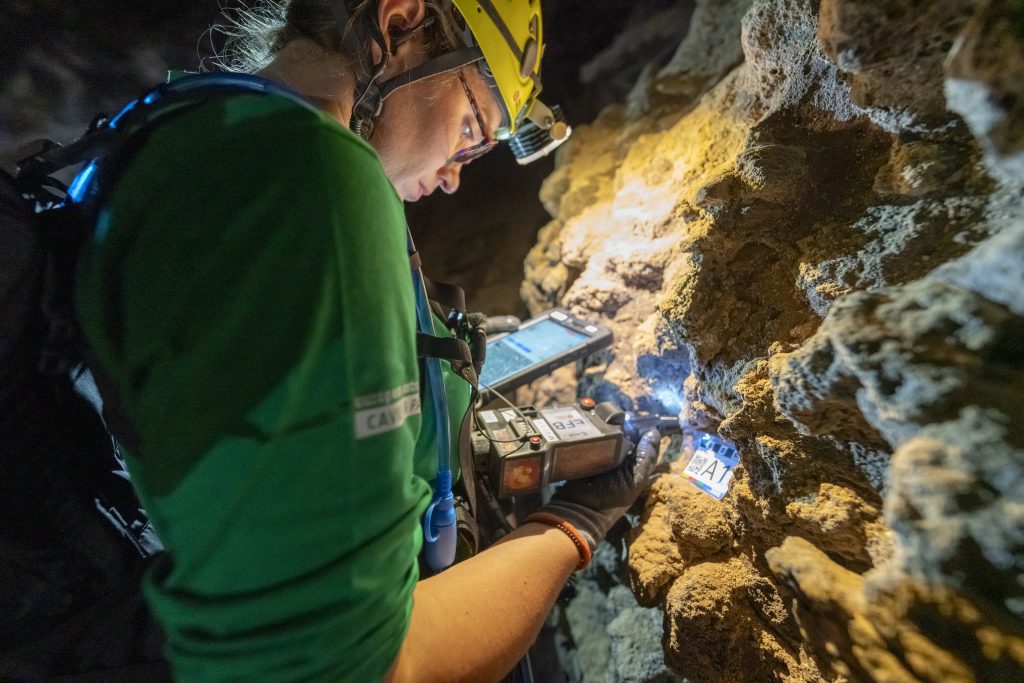

Discussion: no comments